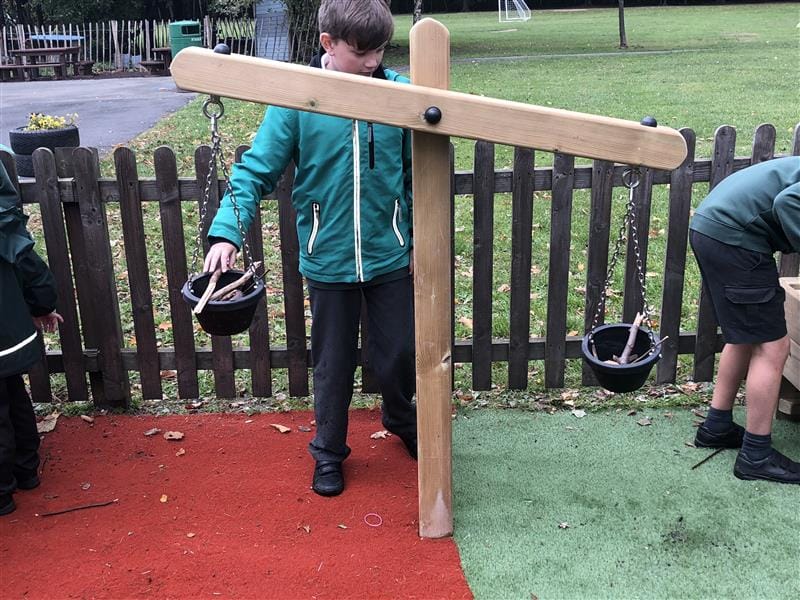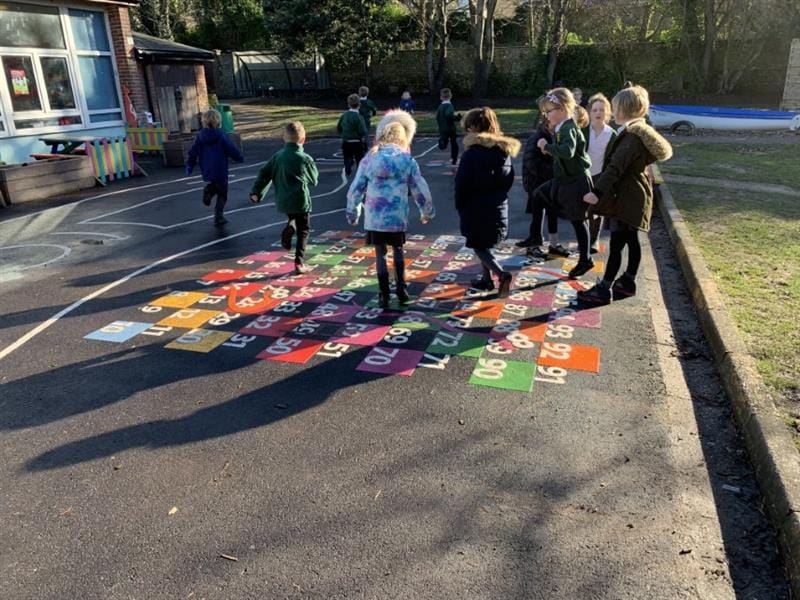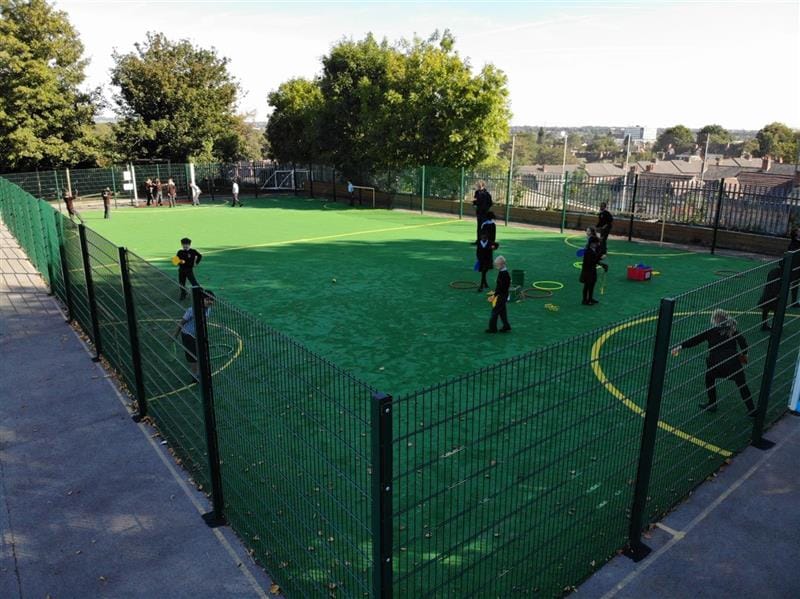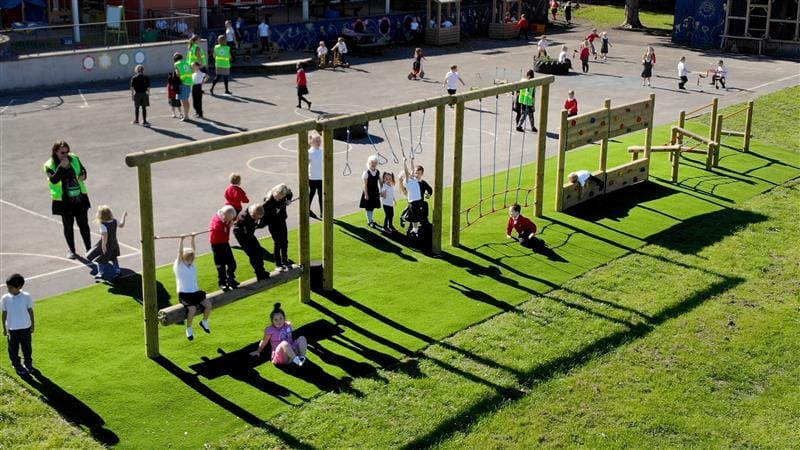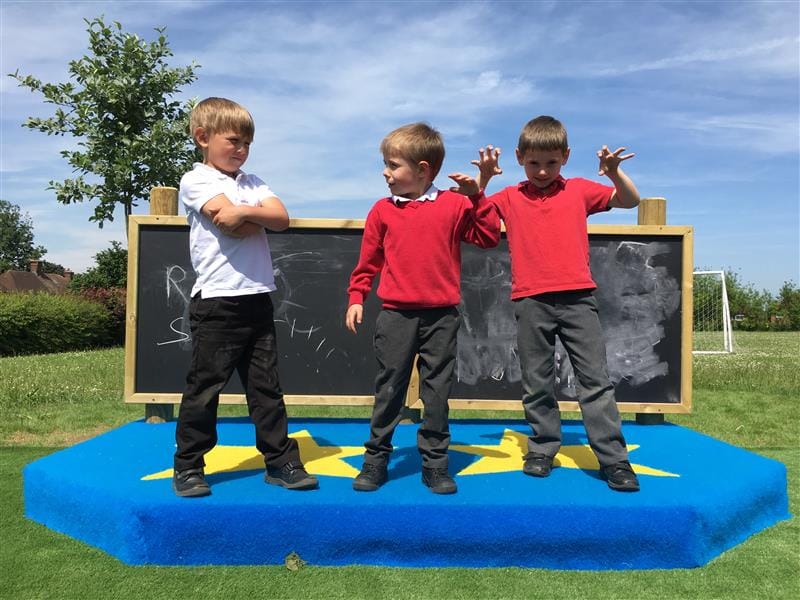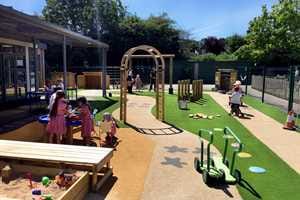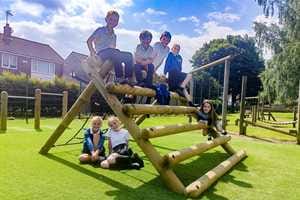
Lesson Ideas and Activities
Inspire Learning Through Mathematics On The Playground For STEAM Learning
When I think back to maths at school, it was one of the subjects that I found incredibly difficult to associate the words fun and amusing with.
Flash forward to adulthood, I haven’t pursued a career as a mathematician and yet I routinely go about my day, on more instances than one, performing quick maths, calculating risks on the probability of a likely outcome and weighing and measuring ingredients to perfect a recipe.
I find myself making the ever-important decision of when the gallon needs to be replaced, dependent on what fraction of milk remains, or when I need to re-fuel my car by estimating the range it’ll likely stretch.
Put simply, maths is a necessity and is applied in numerous ways in the real world.
Maths gets a bad name really. It be enjoyable and entertaining, better still, when incorporated into outdoor play activities, it becomes less frightening and more appealing to little ones. The playground is key in altering children’s thoughts and perceptions. can
Here are some open-ended, exploratory activities to help children make connections between outdoors and maths. I’ve used the key stage 1 syllabus as a guideline:
1. Number and Place Value
Counting to 100 forwards and backwards
Remember the childhood favourite game, stickman? A cool twist on this fun game would be to draw a stick figure in the sand, using our Sand Play Equipment. After forming groups, children can be asked questions like, “which three numbers come after 18?” or “which two numbers come before 20?”.
For each correct answer, a part of the stickman’s body will be erased, until he disappears completely. However, for every wrong answer a part of the body will be added.

Likewise, Thermoplastic Playground Markings are also wonderful numeracy aids, with outstanding designs such as the 1-100 Grid, supporting number recognition, counting on and reinforcing counting backwards too.
Visual resources, available during playtime, allow for better recall during class time.
Estimating how many objects there are and then counting to check
To bring a seasonal edge to ‘Guess how many …. are in the jar?’ you could add mini eggs, for an Easter theme, to a small container and create a competition, in the end the winner takes it all. All the results can be added to the outdoor chalkboard or other Activity Play Panel.
Each child can write their estimate down next to their name. It’s also a great way for children to explore cardinal numbers.
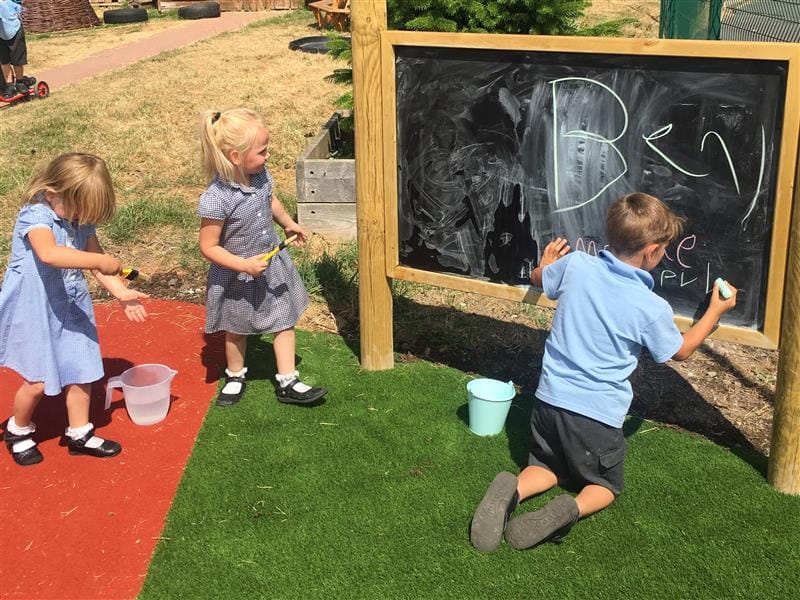
2. Calculating
Learning simple addition and subtraction
An alternative to using a number line in class, children can work in pairs to find the answer of a math question, for instance using number playground markings, one child can jump two steps forwards from three, to find the answer to: 3 + 2.
The challenge can be made difficult based on children’s abilities. Again, for subtractions, they can jump, hop or run backwards to find the answers.
Using money – paying and giving change
Playhouses can be used to create a make-believe shop, complete with a till and money. The shopkeeper can give out pretend money for change. The nifty interactive chalkboard can be used to display prices, or for calculating how much change is due.
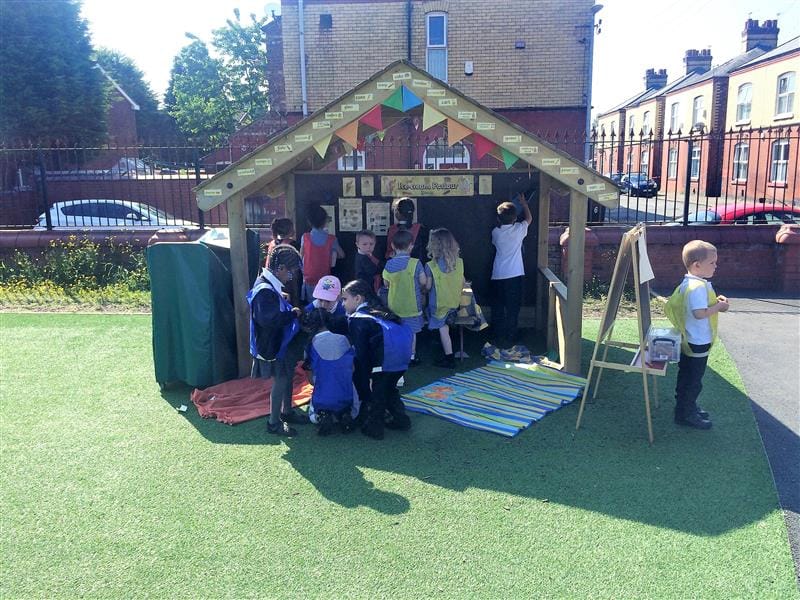
Working out multiplication and division questions using objects to group or share out
There are many exciting games that link physical activity with learning maths. The MUGA Pitch can be used to hold a game where children run around until the teacher blows the whistle. The teacher can then shout out “form groups of 3x2” or whichever multiple you are practising.
This teaches children to problem solve in a group to find the answers. This game can be extended to practise divisions too.
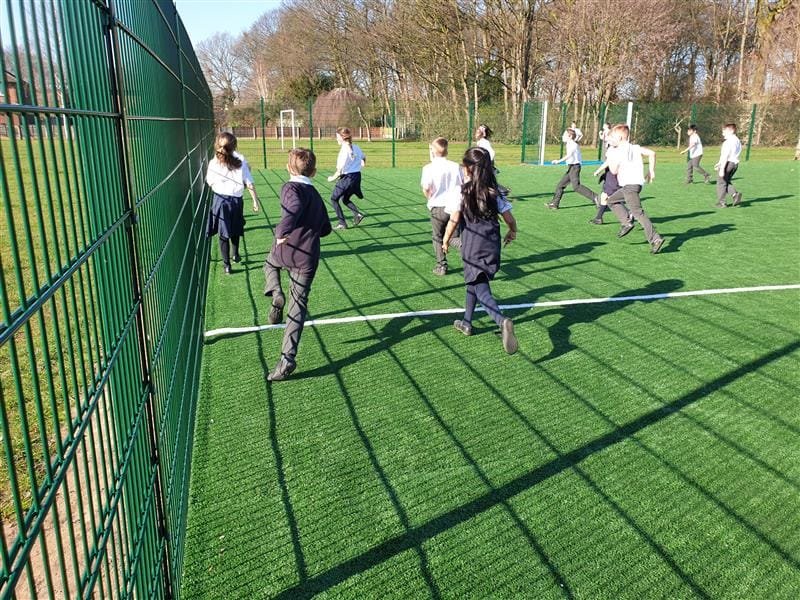
The 2, 5, 10 times tables (Year 1)
Children can form pairs to throw and catch the ball on the sports pitch. Every time a successful catch is made, they can go up in that times table they are practising.
Whenever the ball is dropped they must start the times table again, for instance, going up in fives. To make it more of a challenge, a timer can be added into the mix; the pair who score the highest in their multiples will be the winners.
A game like this allows for children to practise their times table and transfer them from their temporary memory into their long-term memory, allowing for better future recall.
Otherwise, children can use the netball hoop or football goal to shoot a ball and call out a multiple, taking-turns with the class to complete a certain multiple and move onto the next one.
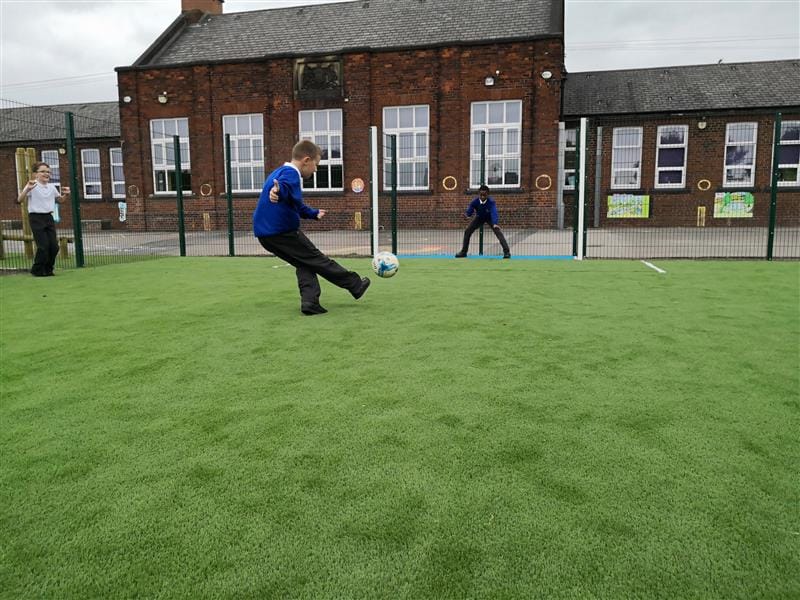
3. Measuring
Telling the time on an analogue clock to half an hour and full hour (Year 1)
Telling the time on an analogue clock can be tough to master. There are several ways you can support children’s learning time on the playground. We have a range of fantastic playground markings. Among those, there is an analogue clock, which can be a handy visual aid for children.
Similarly, remember the game, ‘What’s the time Mr. Wolf?’ This fantastic game and can be played using part of the Daily Mile Track, where the child playing ‘Mr. Wolf’ stands on the opposite end, facing their back towards the other child (b).
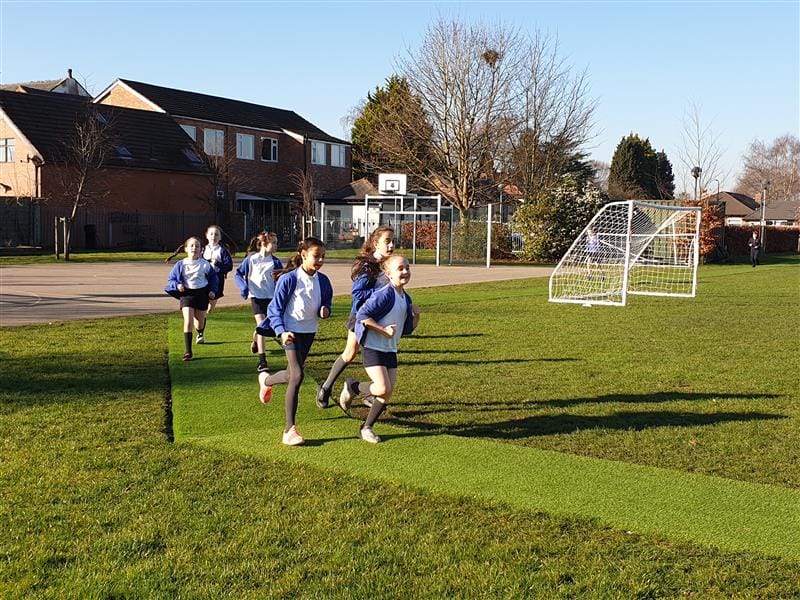
Child b then calls out, “what’s the time Mr. Wolf?”. Mr Wolf answers with the time, either to the full hour, “5 o’clock” or half hour, “5:30”; for older children, more complex times can be used.
To support sequencing, child b will then take that many steps, saying them out loudly, towards Mr. Wolf. This can be continued until someone reaches Mr. Wolf and tags him, or Mr. Wolf shouts out “Dinnertime!”
Another entertaining way of understanding the concept of time is by keeping track of how long it takes their friends to complete all the activities on the Trim Trail, for example. They can use a timer or watch to time their friends and make note of their records.
Measuring length, weight and capacity and comparing these measurements
There are countless opportunities for children to estimate, measure and weigh unalike materials on the playground. The simplest one being using the Weighing Scales: children can explore how much sand is needed to be the same weight as mud or pebbles.
Equally, the water table can be used with differing sized containers to explore concepts such as full, empty, more-than half full and less-than half full.
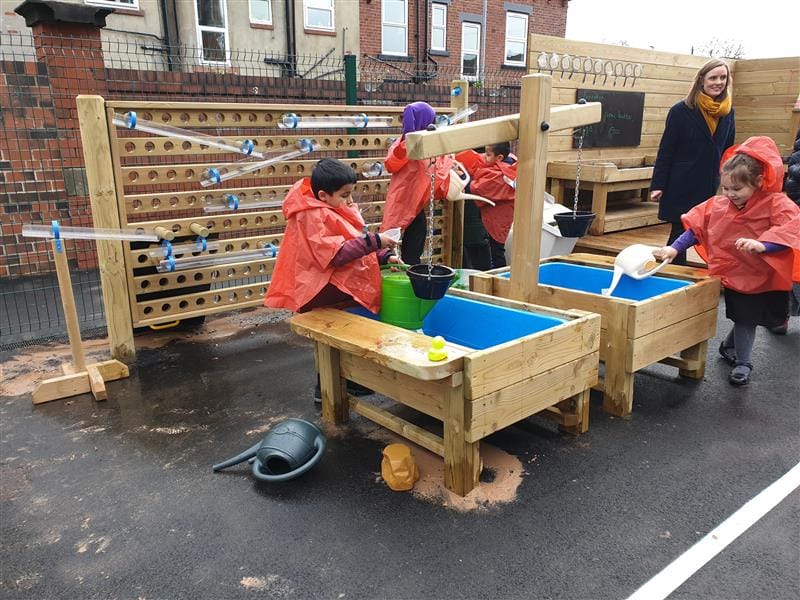
4. Geometry
Recognising, naming and describing shapes
The playground is a great place for children to observe and look for different shapes that they can see in the playground. They can look for specific shapes in equipment such as squares, circles and rectangles. This helps children to establish a link between what they have learnt in class and how these shapes are then applied in the real world.
In the same way, children can use the Performance Stages to create shapes using their bodies and their classmates can then guess the 2D shape formed.
Or, you could utilise the fantastic Play Builder sets to incorporate physical development into your geometry lesson. Task your children to use the wooden planks to build a shape and get them to walk the planks.
Not only will this help children understand more about shapes and angles, but it will also help children exercise and physically engage in the lesson (keeping them more engaged and cooperative with the teachings)!

Using the outdoors to teach children maths allows for it to be seen in a completely different way and can bring fun into learning. It lets children make connections between what they have learned indoors and how it applies in the real world. It promotes conversation amongst peers and team work as they work together to find the answers.
When combining physical activity with learning, more parts of the brain are stimulated and can therefore promote better recollection of mathematical concepts. If you would like to find out how we can help you to improve your school playground to support STEAM learning, please do not hesitate to Contact Us and arrange a free consultation with one of our experts.

